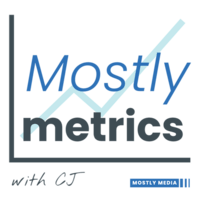If you’re a public company CFO, the quarterly game isn’t just about hitting your numbers; it’s about hitting them just right.

Too soft? You're sandbagging. Too hot? You just made next quarter unwinnable.
Welcome to the world of beat and raise, the five-dimensional chess game that’s equal parts math, narrative, and spirit animals.
It sounds simple on paper, like, OK just work backwards and discount whatever we think we can do by 5%. But it gets complicated because each quarter has a knock on effect on the next.
And also because of reality.
Every quarter you forecast is technically wrong. It’s just a matter of “how wrong.” And that variance needs to be dynamically incorporated into the model.
Today we’ll cover:
Where do Wall Street’s expectations come from?
Building a beat and raise model (WITH TEMPLATE for paid readers)
The appropriate amount of “sand bagging”
Market comps for a “good” beat
How to manage market expectations
Where do Wall Street’s expectations come from?
For public companies, the expectations game starts with consensus estimates. These are built by equity research analysts combining official company guidance and earnings call tea leaves into an informed estimate on what they think you’ll print.
We recently had Hamza Foderwalla, former Executive Director at Morgan Stanley on the podcast to discuss how it works.
The midpoint of their collective revenue and earnings per share projections becomes “the bar.”
Sounds simple, right? But if you’re a company like Crowdstrike, who has like 32 analysts covering them, it takes a ton of data-wrangling to reconcile all the analyst models just to spit out a “median consensus” figure.
So how do you manage the forecast internally? You build a beat and raise model you can update on a quarterly basis as results are printed.
Building a Beat and Raise Model (TEMPLATE BELOW)

OK, let’s teach you how to build a beat and raise model. It’s helpful not only for public companies, *but also private companies* looking to mature their internal forecasting. In fact, at all the private companies I’ve worked at, we ran a simple beat and raise model internally, treating the board as the “street”. You can make a copy of this template and plug in your own numbers.
Subscribe to our premium content to read the rest.
Become a paying subscriber to get access to this post and other subscriber-only content.
UpgradeYour subscription unlocks:
- In-depth “how to” playbooks trusted by the most successful CFOs in the world
- Exclusive access to our private company financial benchmarks
- Support a writer sharing +30,000 hours of on-the-job insights

